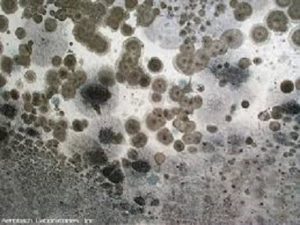
We at ServiceMaster Restoration by the Griffin Company would like to share some tips with our coastal friends to help prevent mold problems. Homeowners have good reason to shudder when hearing, “You’ve got mold!” Mold can wreck your health and your finances: An extensive mold remediation can reach five figures. Here are 10 ways to prevent, control, and combat mold in your home.
Reduce Clutter. Take a good look at household clutter and consider getting rid of some of the items causing this clutter. Clutter blocks airflow and prevents your HVAC system from circulating air. Furniture and draperies that block supply grilles cause condensation. All this moisture creates microclimates in your home that welcome and feed mold growth. Push furniture away from vents and grilles to keep air circulating.
Control the Temperature in Your Home. This may not be what you want to hear especially with the hot summer days we are accustomed to having, but to prevent moisture problems and maximize energy efficiency, set the thermostat at 78 degrees F. Mold problems often emerge during hot, humid summers when you’re tempted to play with the air conditioner. But set the thermostat too high, and the air conditioner won’t dehumidify your air effectively; set it too low, and you create cold surfaces where water vapor can condense.
Keep Windows and Doors Closed When Your AC is On. When you open windows and doors, you let air conditioning escape, waste money, and invite humid air into your cooler home. This causes condensation, which mold loves. So, keep doors and windows shut when the AC is humming. Also, maintain your home at around 80 degrees when you’re on vacation or at work. Too often, we bump the thermostat up to 85 degrees, or turn off the AC when we’re away. This raises temperature and humidity, which creates the ideal home for mold.
Make Sure Your AC is Properly Sized. Make sure your air-conditioning unit is properly sized for your house. If it’s too small, the unit will run constantly, elevating costs but not the temperature; too big, and the unit will constantly start and stop, which wastes energy, too. Install an HVAC unit that’s just right.
Monitor Humidity. An indoor humidity monitor will help you keep track of moisture levels that, ideally, fall between 35% and 50% relative humidity; in very humid climates, at the height of summer, you may have to live with readings closer to 55%. But if you reach 60% relative humidity, it’s time to look for the source of the added moisture; above 70% relative humidity, certain species of mold can begin growing.
Look for Standing Water. If the air conditioner isn’t an issue, search for standing water that’s increasing indoor humidity and providing an environment for mold. Check for puddles or dampness around hot water tanks, sump pumps, freezers, refrigerators, basement doors, and windows. Inspect crawl spaces for groundwater dampness or foundation leaks.
Consider a Dehumidifier. A dehumidifier removes excess moisture from the air.
We at ServiceMaster Restoration by the Griffin Company hope these tips were helpful. We are here to help when you discover a mold problem that needs professional help. We service Daphne, Fairhope, Point Clear, Spanish Fort, Mobile, Theodore, Saraland, Foley, Robertsdale, Loxley, Gulf Shores and Ocean Beach Alabama and surrounding areas.
